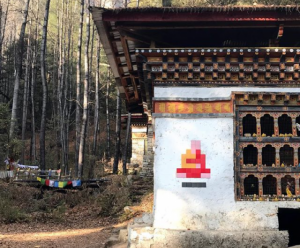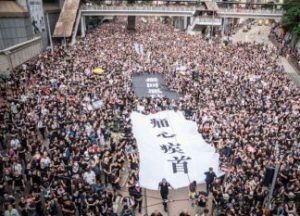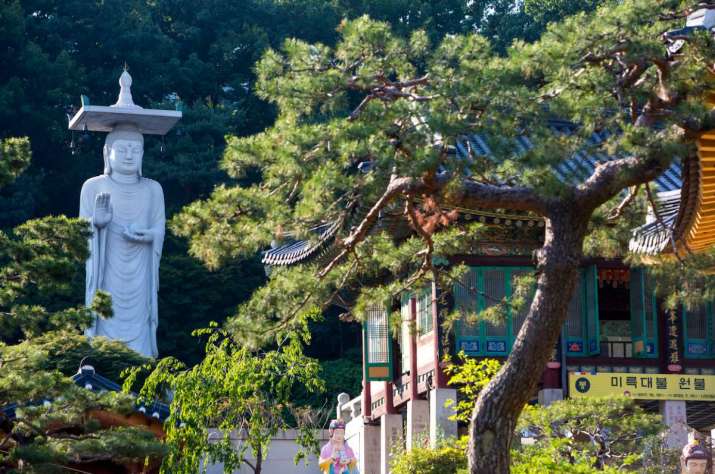
The Cultural Corps of Korean Buddhism is promoting temple stay opportunities at seven mountain monasteries or sansa (산사) that were recently included in the country’s 13th UNESCO World Heritage site, “Sansa, Buddhist Mountain Monasteries in Korea.”*
These traditional monasteries, nestled in tranquil mountain landscapes, have survived and been sustained as living places of spiritual practice for more than 1,000 years following the introduction and propagation of Buddhism across the Korean peninsula.
Temple stay programs offer an opportunity for visitors to glimpse the renunciate life of Buddhist monks and to become acquainted with Korea’s Buddhist history, culture, and traditions firsthand. By staying overnight at a monastery and participating in daily temple life for short periods, visitors can experience such activities as the early morning yebul (예불) ceremony, practicing 108 prostrations or bae (108 배), Seon (Zen) meditation or chamseon (참선), and making rosaries of Buddhist prayer beads. Visiting guests also partake of the same vegetarian meals consumed by the resident monks.
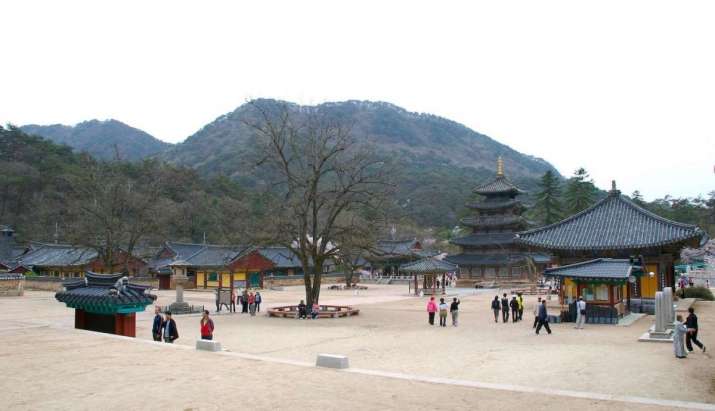
In June last year, seven ancient Buddhist mountain temples, dated to the seventh to ninth centuries, were listed as UNESCO World Heritage Sites by unanimous decision at the annual World Heritage Committee meeting.
The seven Buddhist monasteries—Beopju-sa (법주사) in Boeun, North Chungcheong Province; Bongjeong-sa (봉정사) in Andong, North Gyeongsang; Buseok-sa (부석사) in Yeongju, North Gyeongsang; Daeheung-sa (대흥사0) in Haenam, South Jeolla; Magok-sa (마곡사) in Gongju, South Chungcheong; Seonam-sa (선암사) in Suncheon, South Jeolla; and Tongdo-sa (통도사) in South Gyeongsang—were all founded during the Three Kingdoms period (삼국시대; 57 BCE–668 CE), which comprised Baekje (백제), Silla (신라), and Goguryeo ([고구려], later known as Goryeo [고려]), or the Unified Silla (통일신라; 668–935).
Among the monasteries, Beopju-sa, a major Jogye Order temple, was initially constructed in 553 by the Silla monk Uisin and has been historically associated with Maitreya Buddha. Buseok-sa, also known as “The Temple of the Floating Stone,” was founded by the scholar-monk Uisang in 676. Daeheung-sa, a major temple affiliated with the Jogye Order, is dated to the fourth to ninth centuries. Although no records of its founding are extant, some researchers believe it was established by the monk Adohwasang in 514. Tongdo-sa, another Jogye Order temple, is recognized as one of the Three Jewels—the three principal Buddhist temples in South Korea—and was established by the monk Jajang in 646.
“Buddhism has a long history that has traversed a number of historical eras in the Korean Peninsula,” The World Heritage Committee said in its decision. “The seven mountain monasteries . . . offer a distinctively Korean instantiation of Buddhist monastic culture from the seventh century to the present day. These mountain monasteries are sacred places and provide an exceptional testimony to their long and continuing traditions of Buddhist spiritual practice.” (UNESCO)
The sansa were established as multifunctional religious spaces that could serve to accommodate the Buddhist practices, beliefs, and daily lives of monastics and lay Buddhists alike. In addition to engaging in Seon practice and doctrinal studies, the resident monks share a range of duties and chores involved in managing the monasteries, which includes construction and maintenance of buildings and structures, and producing Buddhist artifacts.
A total of 137 temples across South Korea now offer temple stay opportunities, including 27 temples that offer programs in English, with English-speaking interpreters.
As of 2018, South Korea has 13 listed World Heritage sites,** many of which stand in testament to the country’s long and influential Buddhist heritage, including Seokguram Grotto and Bulguk-sa, atemple in North Gyeongsang Province, the Baekje Historic Areas in South Chungcheong and North Jeolla, the Gyeongju Historic Areas in North Gyeongsang, and the mountain fortress city of Namhansanseong in Gyeonggi.
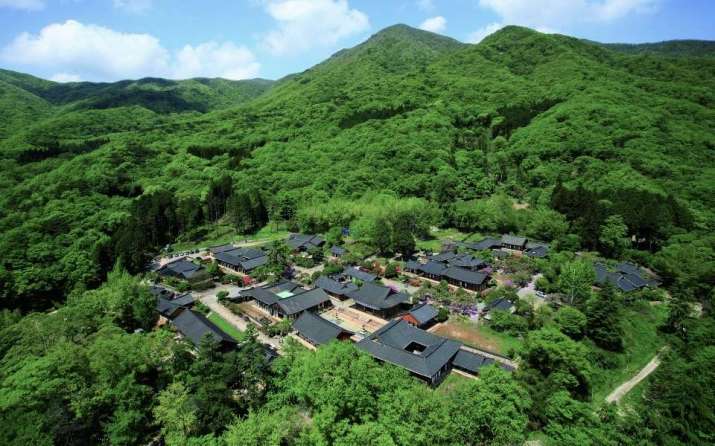
According to data from the 2015 national census, the majority of South Korea’s population—56.1 per cent—holds no religious affiliation. Christians make up the largest religious segment of the population at 27.6 per cent, while Buddhists account for 15.5 per cent.
* Seven Buddhist Mountain Temples in South Korea Receive UNESCO World Heritage Status (Buddhistdoor Global)
See more
Cultural Corps of Korean Buddhism promotes templestay in UNESCO-listed ‘Sansa’ (Travel Daily News)
You Can Stay at Seven Korean Buddhist Temples and UNESCO Heritage Sites (Travel Pulse)
An unforgettable overnight Templestay in a UNESCO World Heritage-listed Buddhist mountain monastery in Korea (PR Newswire)
Templestay takes off in Korea (TTR Weekly)
Amended Draft Decision – UNESCO World Heritage Centre (UNESCO; PDF file)












